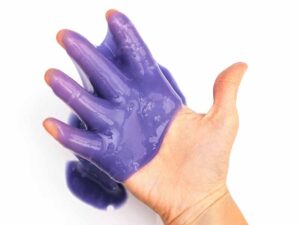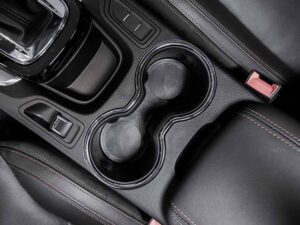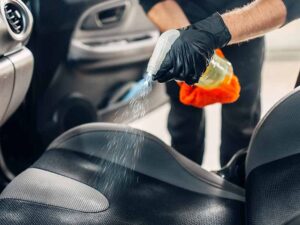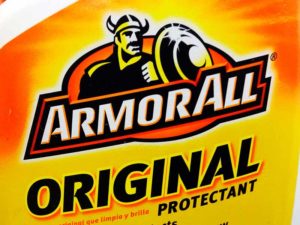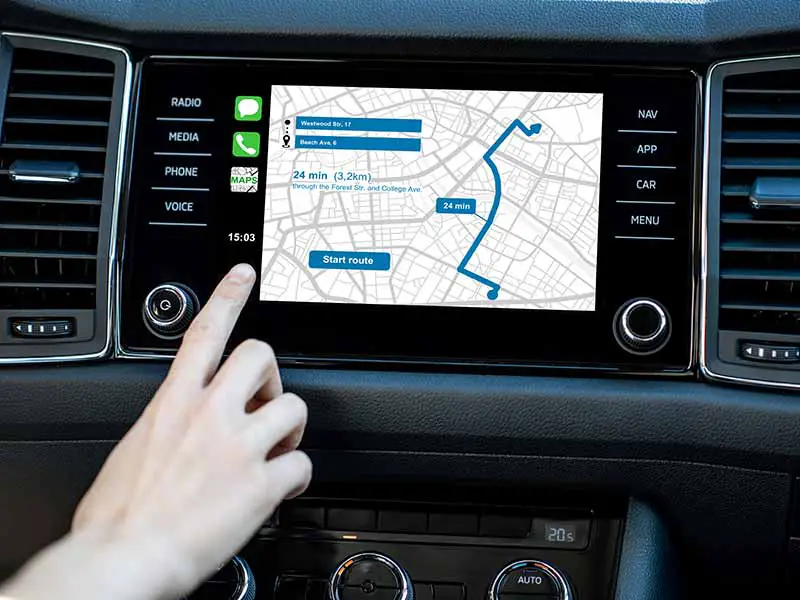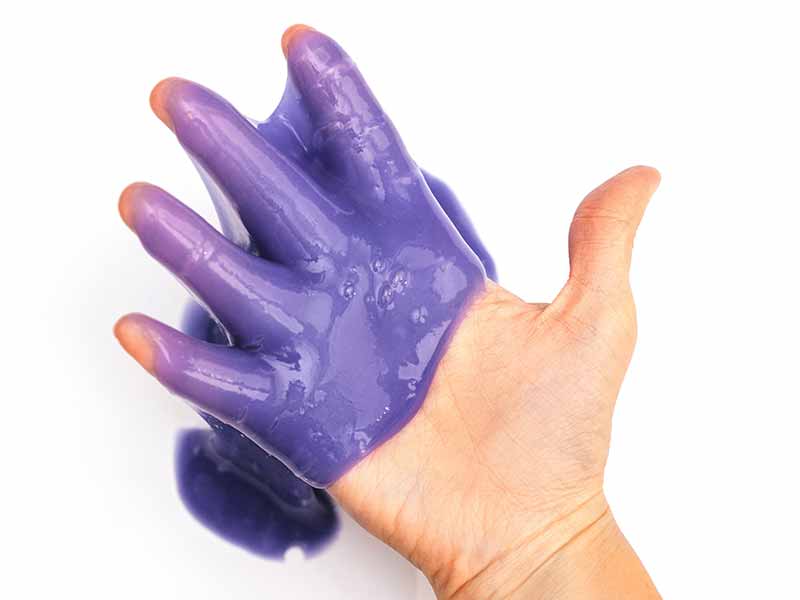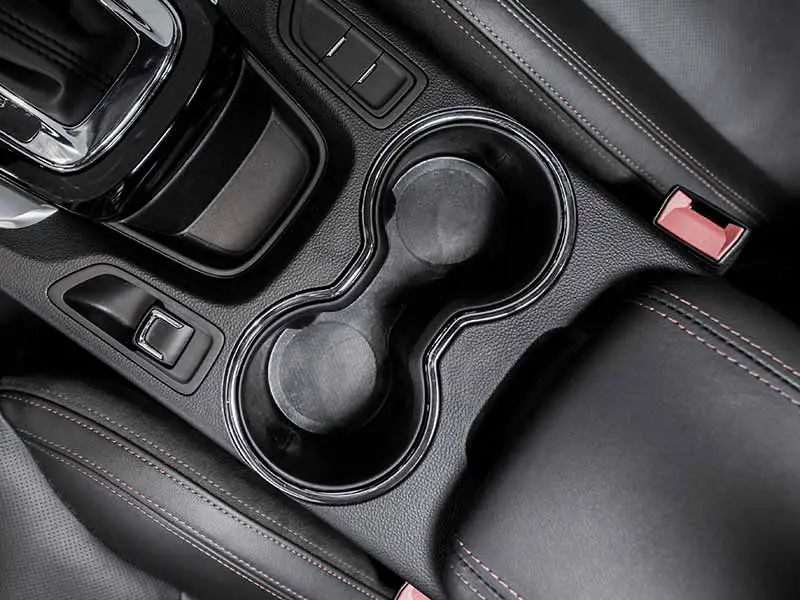Table of Contents
There are many ways gas could have gotten tracked into or spilled in your car or truck. Unfortunately, it doesn’t take much gas to create a real problem. Gas fumes inside your car or truck can be challenging to get rid of, but we’ll outline the most effective method for getting the gas smell out of your vehicle quickly, safely, and easily.
How to Get Rid of Gas Smell
- Use a clean rag to soak as much of the gas up as quickly as possible
- Create a mixture of 1/3 baking soda, 1/3 white vinegar, and 1/3 hot water
- Let the mixture soak into the area the gasoline was spilled for 30 minutes
- Wipe away as much of the baking soda, vinegar, and water mixture as possible with a clean cloth
- Wash the area with mild dish soap and hot water
- Dry the stained area with rags or towels
- You can also put some cat litter onto the stain spot to help absorb any remaining gas.
- If possible, leave the windows open to allow any remaining gas to evaporate
- If the smell lingers, spray with an air freshener to help cover any lingering smell until any residual gas evaporates
How To Neutralize Gasoline Odor
The compounds that give gasoline its smell are nitrogen and sulfur. Combining baking soda and vinegar is the best neutralizer for these compounds.
Be sure to soak up as much of the gas as you can with rags. It’s best to remove gasoline as quickly as possible before trying to get rid of the smell. If you don’t remove the gas, it will continue to evaporate and create more fumes and gas odor.
How Do I Clean Up A Gas Spill In My Car?
Use clean rags to soak up as much of the gas as possible. Combining baking soda, white vinegar, and hot water to create a neutralizing paste is the most effective method of dealing with any gas the rags couldn’t soak up. Rub the mixture into the carpet or upholstery to allow it to combine better and neutralize the gas. Wash away the mixture with some mild soap and hot water. Dry the spot with some rags or old towels. If there is still a strong smell, you may want to repeat the process or put some cat litter on the spot to help absorb the remaining gasoline and odors.-
How To Get Gasoline Out Of Car Carpet
When dealing specifically with car carpets, you need to be sure to try to remove as much gasoline from the padding beneath the carpet as possible. Foam padding will absorb the gas and slow down its ability to evaporate. Place a rag or paper towel on top of the spilled spot and apply pressure. This will force the gasoline out of the padding and into the rag or paper towels. You will need to repeat this process until you no longer see any gasoline collecting on the rag. Once you’re satisfied that you’ve soaked up as much of the gas as possible, you can continue with the process explained above. -
How To Get Gas Out Of Car Upholstery
Car seats and other upholstery have padding beneath the fabric, just like carpet. However, the padding is much thicker, and the type of padding may or may not absorb gas well. Like with the carpet padding, do your best to absorb as much as possible with some clean rags. Depending on your situation, this may be easier than dealing with carpet, which could be much more difficult. -
How To Clean A Gas Spill In A Car Trunk or SUV Hatch
Carpet in the bottom of a trunk or rear hatch can sometimes be removed. However, if it’s possible, you should remove it and clean it thoroughly outside the car. This will likely make it easier to clean, but it will also get the source of the gas fumes out of your vehicle. Also, by removing the carpet, you can easily clean underneath the area of the spill.
Does Gasoline Smell Go Away?
The answer to this question depends on what caused the smell to begin with. For example, if gasoline was spilled, then yes, eventually it will evaporate if your windows are left open, and the fumes can escape the vehicle cabin.
It would be best if you didn’t leave gasoline to evaporate away, though. Gas can cause severe damage to some surfaces on the interior of your car or truck. It’s particularly damaging to plastic.
If the source of the smell is not from a spill and is from a fuel leak of some kind, then you have a problem that you need to solve first. A fuel leak is dangerous and should be fixed quickly. It would be best to drive or spend time in a car or truck with a fuel leak.
How Long Does It Take For Gas Smell To Go Away In A Car?
Gasoline spills can take anywhere from a few hours to a few days or more to evaporate, depending on how much gasoline was spilled and how long you can keep your windows, doors, trunk, or hatch open to allow the fumes to escape. Gasoline fumes are heavier than air, so opening doors is preferable to simply opening windows. This will make it easier for air to flow through the cabin and blow the fumes in the footwells out.
If you have a gas smell in your car but haven’t spilled any gasoline, you may have a gas leak. This is extremely dangerous, and you should have the problem fixed quickly.
Is Spilled Gas In A Car Dangerous?
Gasoline spills are hazardous. Not only is gasoline obviously flammable, but the fumes are highly toxic. In addition, gas can be damaging to various surfaces inside your car or truck. Therefore, it would be best if you always attempted to remove gasoline from your vehicle’s interior as quickly as possible.
It’s actually gas fumes that are the most flammable. So it would be best if you opened all of the windows, doors, or trunk as quickly as possible to allow the fumes to escape and prevent them from building up.
How Long Is Spilled Gas Flammable?
Many factors affect how long spilled gas can be flammable. It’s actually the gasoline fumes that are flammable, more so than the liquid gasoline itself. Opening your vehicle doors, windows, trunk, or hatch is essential to allow the fumes to dilute and escape immediately.
Any remaining gasoline should be absorbed with rags and removed quickly to prevent the gas from evaporating and fumes from collecting. Next, the spot of the spill should be diluted with a mixture of equal parts baking soda, white vinegar, and hot water to dilute the gasoline and neutralize it. Remove the mixture after 30 minutes and clean the stain with mild dish soap.
Is Smelling Gasoline Bad For You?
Gasoline fumes are hazardous. Gas fumes can have many serious adverse effects on your health, and you should keep away from them for your safety. Open the doors, windows, trunk, or hatch of your vehicle immediately to eliminate the fumes as quickly as possible.
Can You Die From Inhaling Gas Fumes?
Yes. Gas fumes are highly toxic, and if exposed for a long enough time in a poorly ventilated space, you can ultimately die from exposure. You’ll experience some very unpleasant side effects before that happens. It’s essential to be very careful around gasoline fumes.
What Are Gasoline Fume Inhalation Symptoms?
Here’s a list of potential symptoms:
- Breathing Issues
- Throat Pain
- Stomach Pain & Vomiting
- Blurred Vision & Dizziness
- Headache
- Passing Out
Is Gasoline Safe On Car Paint?
Gas is very damaging to car paint and your clear coat. It should be removed as soon as possible to prevent it from causing permanent damage. Rinse it off with water and wipe it away with a paper towel or clean rag.
Final Thoughts
It’s essential to get rid of gasoline spills inside your car or truck as quickly as possible. Not only is it unsafe to inhale the fumes as well as quite flammable, but it can damage surfaces on the interior of your vehicle. The unpleasant gasoline smell is merely an inconvenience when compared to the more severe issues. Open your car or truck up as much as possible to allow fumes to escape, and use a clean rag to soak up as much spilled gas as you can. Use a mixture of baking soda, white vinegar, and hot water to neutralize the gasoline.

